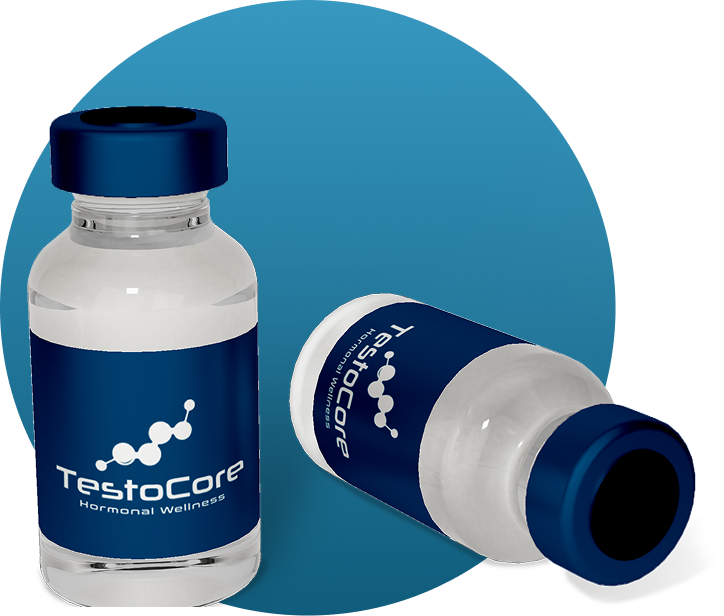Medical weight loss with GLP-1 (glucagon-like peptide-1) medications represents a promising approach for individuals struggling with obesity or weight-related health issues. GLP-1 medications, such as semaglutide and tirzepatide, mimic the action of the natural GLP-1 hormone, which regulates appetite and food intake. These medications work by enhancing feelings of fullness, slowing gastric emptying, and promoting insulin secretion, leading to reduced caloric intake and significant weight loss. Combined with lifestyle changes such as a balanced diet and regular exercise, GLP-1 medications offer an effective and sustainable strategy for achieving and maintaining a healthier weight, ultimately improving overall health and quality of life.

Semaglutide
Compounded with Glycine
Same active ingredient
as Ozempic & Wegovy
$259/month

Tirzepatide
Compounded with Glycine
Same active ingredient as
Mounjaro & Zepbound
$429/month
ALL TREATMENTS INCLUDE
FREE FOLLOW UPS
Monthly check ins with your personal Accountability Partner
FREE 3D BODY SCANS
Best tool to see progress. See your inches disappear while your pounds melt away.
FREE HOME DELIVERY
• All meds
• All supplies
• Deliver straight to your door.
FREE LIPO B12 SHOTS
To boost your energy and aid in weight loss process

In Office or
Telehealth Appointments
Flexible care, wherever you are.

Ongoing support:
We keep you accountable
and on track to achieve your goal.

Personalized Care:
All treatment tailored
to your needs.

Accessibility:
Get answers in minutes.
Not days.
SEEING IS BELIEVING
The Styku 3D Body Scanner does far more than just track your weight. It creates a full 3D model of your body, measuring body fat %, lean mass, BMI, posture, and over 20 precise body measurements—including waist, hips, arms, and thighs.
Unlike a regular scale, Styku shows visible changes in your body shape over time, helping you stay motivated
Real People. Real Results.
Real Science.

Jennifer lost 32 LB
in 6 months

Greg lost 35 LB
in 5 months

Allison lost 40 LB
in just 4 months
We understand weight loss journey feels overwhelming. We’ve helped countless patients take control of their health—and see real, lasting results.

22% Body Weight Loss
Lose up to 22% of your body weight with GLP-1 medications like Tizerpatide and Semaglutide

6x More Effective
Patients experience weight loss up to ox greater than with diet and exercise alone.

6.9% Waist Reduction
Average reduction in vaist-to-height ratio, a key narker of visceral fat.**
FAQ
What is Semaglutide or Tirzeparide?
Semaglutide and Tirzepatide are FDA-approved medications originally developed for diabetes that are now widely used for medical weight loss. They help regulate appetite, reduce cravings, and improve how your body processes sugar and fat.
How do these medications help me lose weight?
They work by mimicking natural hormones in your body that control hunger and satiety. This results in reduced appetite, longer feelings of fullness, and fewer cravings — which all support sustainable fat loss.
Is this program safe?
Yes. Semaglutide and Tirzepatide are clinically tested and doctor-supervised. You’ll be evaluated before starting and monitored throughout your program to ensure your safety and success.
How much weight can I expect to lose?
While results vary, many patients lose 10–20% of their body weight over several months when combined with healthy lifestyle habits.
How long does the program last?
Most patients start seeing noticeable results within the first 4–8 weeks, but the program duration depends on your goals and medical history. We tailor each plan to your body and timeline.
Do I need to exercise or follow a strict diet?
We recommend a healthy, balanced lifestyle — but there’s no extreme dieting or high-intensity training required. These medications work even without major changes, though combining them with better habits accelerates results.
Are there any side effects?
Some people experience mild nausea, constipation, or fatigue early on. These symptoms usually pass as your body adjusts. Your provider will help manage any side effects.
Will the weight come back after I stop?
With the right support, many patients keep the weight off. We help you build sustainable habits and offer maintenance plans if needed.
